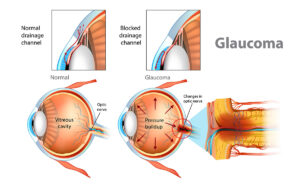Two similar procedures, two very different goals—here’s how to choose the right one for your vision.
As we age, our eyes change—sometimes gradually, sometimes dramatically. For those navigating blurry vision, reading struggles, or trouble driving at night, two common procedures often enter the conversation: cataract surgery and refractive lens exchange (RLE). While both involve replacing the eye’s natural lens with an artificial one, the why and when behind each surgery make a big difference.
At Anaheim Eye Institute, we help patients understand their options so they can make confident, informed choices about their eye health. Whether you’ve been diagnosed with cataracts or are exploring vision correction options before they develop, here’s what you need to know.
“Cataract surgery restores lost vision—RLE helps preserve it before it’s gone.”
What Is Cataract Surgery?
Cataract surgery is one of the most common—and successful—surgical procedures in the world. It’s performed when the natural lens becomes clouded, typically due to age, and begins to interfere with vision.
During the procedure, the cloudy lens is removed and replaced with a clear intraocular lens (IOL). The results are often life-changing: improved clarity, better color perception, and reduced glare from lights.
When it’s used:
- You’ve been diagnosed with cataracts
- Your vision is noticeably blurry or faded
- Driving at night becomes difficult
- You experience glare or halos around lights
Most insurance plans cover cataract surgery because it treats a medical condition that impacts daily life.

What Is RLE (Refractive Lens Exchange)?
RLE, also called clear lens exchange, is essentially the same procedure as cataract surgery—but performed electively, before cataracts develop. Instead of waiting for the lens to become cloudy, the natural lens is replaced with an advanced IOL to correct vision issues like presbyopia, nearsightedness, or farsightedness.
Think of RLE as proactive vision enhancement. It’s especially popular among patients over 45 who want to reduce dependence on glasses or contacts—particularly those who may not be candidates for LASIK due to thin corneas or dry eye.
When it’s used:
- You don’t have cataracts but want to correct refractive errors
- You’re experiencing age-related reading vision loss
- You want to eliminate the need for future cataract surgery
- You seek long-term clarity without LASIK
Because RLE is considered elective, it’s not typically covered by insurance.
“Both procedures remove the eye’s natural lens. The difference lies in your timing and your goals.”
How Are the Procedures Similar?
Both cataract surgery and RLE:
- Remove the eye’s natural lens
- Implant an artificial intraocular lens (IOL)
- Are outpatient procedures with quick recovery
- Offer long-term improvement in vision
- Can premium IOLs be used to correct astigmatism or multifocal vision
In both cases, patients experience minimal discomfort and fast healing and often notice clearer vision within 24–48 hours.
Key Differences to Consider
The biggest distinction is purpose. Cataract surgery is medically necessary and treats a cloudy lens. RLE is elective and addresses vision correction in aging eyes—before cataracts form.
| Factor | Cataract Surgery | RLE (Refractive Lens Exchange) |
|---|---|---|
| Purpose | Treats clouded lenses | Corrects refractive errors |
| Typical Age Range | 60+ | 45–60 |
| Covered by Insurance | Yes | No |
| Vision Correction Goals | Limited to single vision or astigmatism (unless upgraded) | Often includes multifocal, presbyopia-correcting lenses |
| Future Cataract Risk | Eliminated after surgery | Prevented before development |
At Anaheim Eye Institute, we help patients evaluate which approach makes the most sense based on their age, lifestyle, eye health, and goals.
FAQ: Cataract Surgery vs. RLE
Can RLE also prevent cataracts?
Yes. Since RLE removes the natural lens (just like cataract surgery), it eliminates the possibility of developing cataracts later.
Is one procedure safer than the other?
Both have excellent safety profiles and similar techniques. RLE may have slightly higher expectations for visual outcome since it’s elective, but both are very low risk when done by experienced surgeons.
Can I choose RLE if I already have early-stage cataracts?
Yes. In fact, RLE may be recommended if the cataracts are mild and you’re also seeking full vision correction.
Will I still need glasses after either surgery?
It depends on the type of IOL you choose. Many patients opt for multifocal or toric lenses to minimize the need for glasses.




